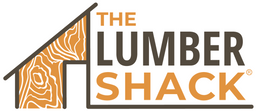Wood Characteristics and Common Defects
Bark Inclusions & Ingrown Limbs

Bark Inclusions or Bark Pockets are pockets of bark found within the interior of a tree. An Ingrown Limb is a limb or branch that has been cut through during the sawing process.
Bird Peck

Bird pecking can cause small injuries to the tree that result in grain changes that later show up as various forms of figure in the wood.
Bow

A bow is a warp across the length of the face of the wood in which the end edges are higher or lower than the center of the wood.
Cup

A cup is a warp across the width of the face of the wood in which the edges are higher or lower than the center of the wood.
Knots

A knot is a portion of a branch or limb that has become incorporated in a piece of lumber. Typically they are circular in shape and darker in color. Knots can be categorized further into Sound Knots, Un-Sound Knots, and Knot Holes.
Metal Staining

Metal staining can cause blue stains on a slab due to metal that has been engulfed by a tree.
Pith

Pith is the soft textured tissue located at the very center or a cross-section of a tree trunk, branch, or twig. The pith in hardwoods is sometimes a cavity (open) while the pith in softwoods is usually sound.
Planer Snipe

Planer Snipe is when a planer cuts a little bit deeper at the beginning or end of a long board.
Rot or Punky/Soft Wood

Rot or Punky Wood is a condition of wood in which it is very soft and light with very low density. Punky wood is the result of rot, which is defined by the decaying of wood.
Spalting

Spalting is dead wood that has undergone a particular form of bacterial decay that often looks like a black ink line of varying thickness and great irregularity drawn through the wood. When it is very sharply defined black lines it is sometimes called “black line spalting”.
Splits, Cracks, and & Checks

Splits and Cracks are ruptures or separations in the grain of the wood, which can reduce the quality in strength. End Checks are small checks or cracks at the end of a slab or block of wood.
Taper

A taper occurs when boards are taper off in thickness in one area of the board.
Twist

A twist is a distortion in which the two ends do not lie on the same plane.
Voids

A void is an area in a slab that is missing/non-existent. Some voids go all the way through the thickness of the slab, or some can be only 1/4” deep.
Wane

Wane is the presence of bark or lack of wood from any cause on the edge or corner of a piece of wood.
Worm/Insect Holes

Worm/Insect Holes are passageways and openings made/eaten in the wood by insects or their larvae. Sometimes the holes are filled in by a natural process so there is no void, just discolored areas.



